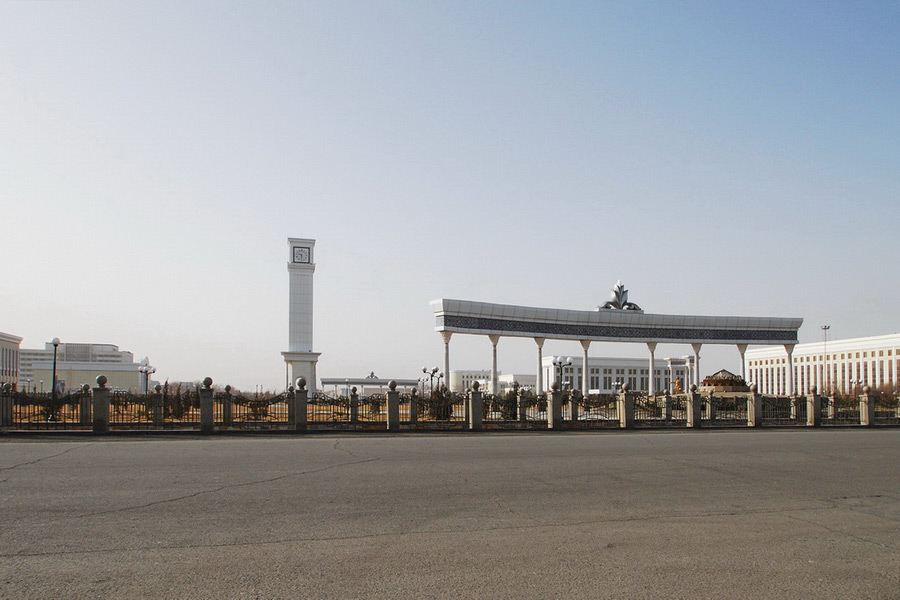Urgench, Uzbekistan

Former names: Yangi Urganch
Elevation above sea level: 103 meters
Popular languages Uzbek, Russian, Tajik
Time zone: UTC+5
Population: 205,480 (2021)
International dialing code: +998 62
Postal code: 2201XX
Vehicle registration code: 90-94
Urgench is a small city in Uzbekistan that acts as a transportation hub between Khiva and other major cities. The ancient fortress of Ichan-Kala in Khiva is just 38 kilometers from Urgench's international airport.
How to Get to Urgench?
You can travel to Urgench by plane, train, or car.
Urgench International Airport receives flights from Tashkent, Moscow, Saint Petersburg, Makhachkala, Baku, and Istanbul.
By train, Urgench is accessible from Tashkent, Samarkand, Navoi, Bukhara, Nukus, Andijan, and Volgograd. It's worth noting that the journey from Tashkent to Urgench can take more than 15 hours.
The quickest car journey to Urgench is from Nukus, a distance of 155 kilometers. Traveling from other major cities in Uzbekistan involves distances of over 500 kilometers.
You can also drive from the Turkmen city of Dashoguz to Khiva. This route includes a border crossing and takes about 2.5 hours. Remember, a visa is required for entering Turkmenistan.
Is Urgench Safe?
Urgench is generally safe. There are many law enforcement officers around, especially given the influx of tourists visiting Khiva. However, it's still important to keep an eye on your belongings and documents, as basic safety precautions should always be observed.
Brief History of Urgench
Historically known as Gurganj, Urgench was once the capital of ancient Khorezm, founded in the 8th century BC. It's important to note that the historic Urgench, known as Köneürgenç or Konya-Urgench, is now located in Turkmenistan.
In the 17th century, residents moved from the old city across the Amu Darya river after the river changed its course, leading to the decline of the original city. This new settlement was called New Urgench, which was renamed Urgench in 1929.
Urgench Sights & Attractions
Urgench primarily serves as a gateway to Khiva. The city itself doesn’t have many tourist attractions, apart from the Museum of Modern Art, located in a building dating back to 1910. This museum displays nearly 1,000 works by Uzbek artists and sculptors.
In 2022, two new branches of the Museum of Modern Art were opened in Urgench:
- The Museum of Khorezm Dance Lazgi (lyazgi), which was added to the UNESCO Intangible Cultural Heritage list in 2019.
- The house museum of Kamiljan Ataniyazov, a noted performer of folk songs and epics, and a People's Artist of the Uzbek SSR.
Another local highlight is Youth Lake, a cultural and architectural complex where you can see miniatures of historical monuments from Samarkand, Bukhara, Shahrisabz, and Khiva.
To the north of Urgench are the fortresses of Ayaz-Kala, Toprak-Kala, and Kyzyl-Kala.
Transport in Urgench
Urgench features a unique form of transport that is no longer found in other Uzbek cities – an intercity trolleybus that was introduced in 1997. Though it doesn’t travel a great distance within Urgench itself, it can take you to Ichan-Kala in Khiva, a journey of just over 30 km.
Food in Urgench
Urgench and the wider Khorezm region are known for two unique dishes not found elsewhere in Uzbekistan. Shivit oshi is a green noodle lagman, with dill added to the dough. Tuhum-barak resembles dumplings filled with raw eggs, cooked until the dough is firm.
The area is also known for suzma pilaf, the most diet-friendly version of the dish, seasoned only with salt.
Try the Khorezmian lepyoshkas, sweet yeast breads that are distinct in each region of Uzbekistan, offering a unique taste.
Furthermore, Urgench is renowned for its delicious fish dishes, caught in the Amu Darya River. Fish from Khorezm is considered the tastiest in Uzbekistan and can be enjoyed in local cafes and restaurants.
Best Time to Visit Urgench
The best time to visit Urgench is from March to October, although be prepared for high temperatures during the summer months.

